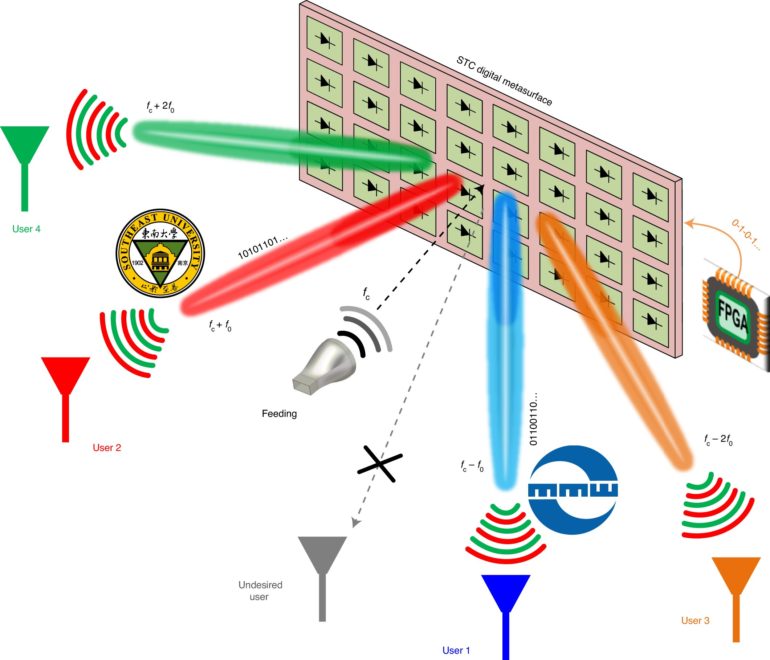A combined team of researchers from Southeast University and the Jiangsu Cyber Space Science & Technology Co., both in China, has developed a way to use digitally programmable metasurfaces to conduct space and frequency division multiplexing. In their paper published in the journal Nature Electronics, the group describes their technique and the two-channel mixer they built to demonstrate their ideas. Shuai Nie and Ian Akyildiz with the Georgia Institute of Technology have published a News & Views piece in the same issue, outlining the ways that metasurfaces have been used in wireless communications and the work done by the team in China.
In computer science, modulation is the process of combining several streams of data into a single bigger stream, typically before transmission over a communications network. On the other end, the big data-stream is broken down into its individual smaller streams by a multiplexer. Current systems use techniques based on certain attributes of the signal to separate the information in a given stream into the smaller streams—four main types have emerged: frequency, code, time and space division multiplexors.
Over the past several decades, researchers have developed many kinds of metamaterials—materials with desired properties that do not exist in nature. More recently, attention has been given to metasurfaces, which are 2D rectangular-shaped metamaterials. Researchers have found that such materials can be engineered to bend radio waves as they pass through them in desired ways. In this new effort, the researchers have developed a metasurface that can conduct frequency and space-division multiplexing. They found that by encoding special matrices in the metasurface using more than one channel, they could transmit digital messages to different devices simultaneously, without converting from analog to digital signaling and without using any mixing processes.
The researchers tested their ideas by building a two-channel wireless communication system that was based on two-bit space and time-coding metasurfaces. They tested it by sending two digitally coded images from two independent devices simultaneously through the metasurface to two receiving devices on the other side. Nie and Akyildiz note that the design is easily expandable, only requiring a bigger metasurface to provide more channels.
Information transition mechanisms of spatiotemporal metasurfaces
More information:
Lei Zhang et al. A wireless communication scheme based on space- and frequency-division multiplexing using digital metasurfaces, Nature Electronics (2021). DOI: 10.1038/s41928-021-00554-4
Shuai Nie et al. Metasurfaces for multiplexed communication, Nature Electronics (2021). DOI: 10.1038/s41928-021-00555-3
2021 Science X Network
Citation:
Using digitally programmable metasurfaces to conduct space and frequency division multiplexing (2021, March 25)
retrieved 27 March 2021
from https://techxplore.com/news/2021-03-digitally-programmable-metasurfaces-space-frequency.html
This document is subject to copyright. Apart from any fair dealing for the purpose of private study or research, no
part may be reproduced without the written permission. The content is provided for information purposes only.



